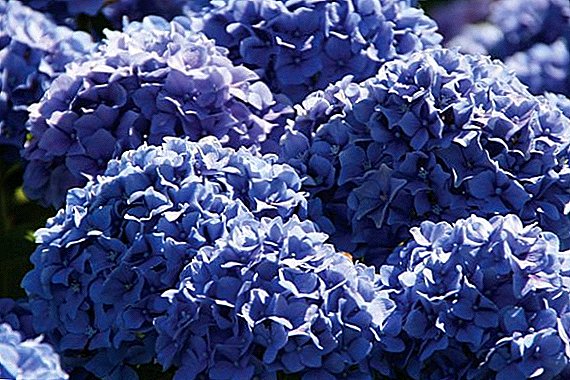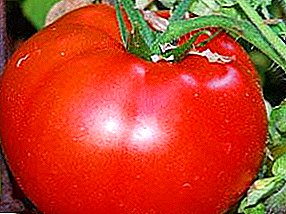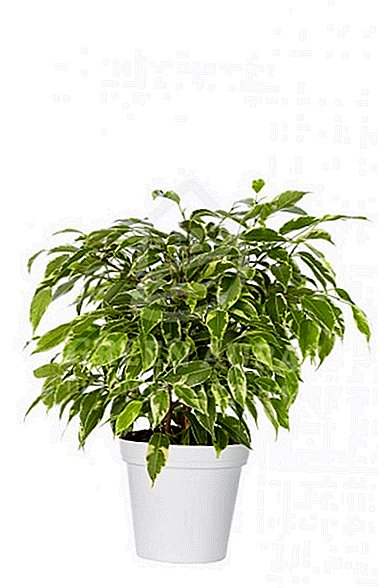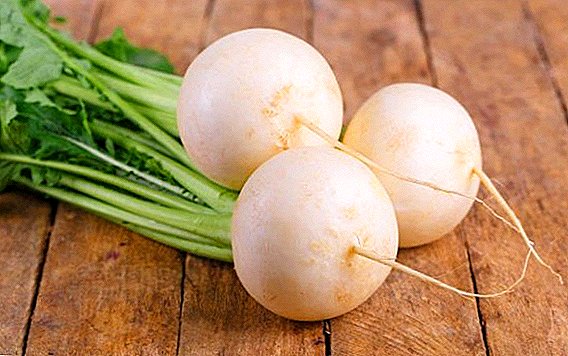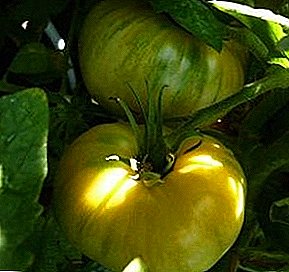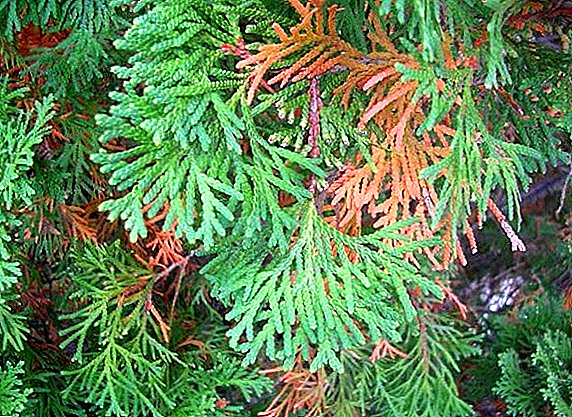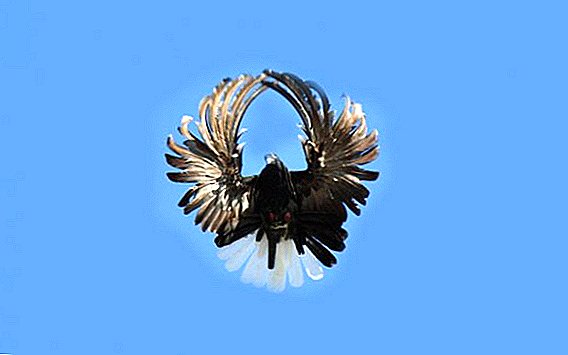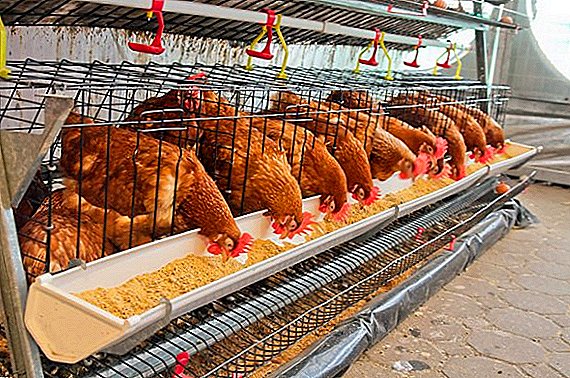 Breeding chickens is a simple and fairly profitable process. It is not only a source of dietary meat, but also eggs. According to statistics, about 300 eggs are consumed by one person per year. Birds are not picky at all to growing conditions and are easy to care for. Even if you do not have enough space for the construction of a walking range, you can keep them in special cells, so the discussion below will focus on the features of this type of maintenance.
Breeding chickens is a simple and fairly profitable process. It is not only a source of dietary meat, but also eggs. According to statistics, about 300 eggs are consumed by one person per year. Birds are not picky at all to growing conditions and are easy to care for. Even if you do not have enough space for the construction of a walking range, you can keep them in special cells, so the discussion below will focus on the features of this type of maintenance.
What breeds of chickens are suitable for cage
Breeds are considered to be the best for cell content:
- Kuchinsky;
- Leggorn;
- Loman Brown;
- Hisex Brown.
Did you know? The egg is 67% protein, 97% of which is easily absorbed by the human body. This is a benchmark.
Kuchinsky
The main characteristics of the breed:
- medium sized head;
- long body (bulging chest and wide back);
- powerful yellow-brown beak;
- red lobes;
- leaflike crest;
- wings, tight to the body;
- low yellow legs;
- gold print calico;
- lush gray poduh;
- the average weight of females - 2.8 kg, males - 3.8 kg;
- egg weight - 60 g;
- the color of eggs is light brown;
- annual egg production - 180-250 pcs.

Leggorn
For representatives of this breed are characteristic:
- small head;
- bright red comb;
- short yellow beak with slightly curved tip;
- long slender neck;
Familiarize yourself with the ins and outs of chick keeping.
- white thin legs of medium length;
- flat back, bulging breast and wide abdomen;
- the main color is white, but there may be other variations;
- weight of females - up to 2 kg, males - up to 2.7 kg;
- egg weight - 60 g;
- egg production - 250-300 pcs.

Lohman Brown
Lohman Brown has the following distinctive external features:
- developed body, neat appearance;
- small head;
- red comb;
- bright lobes;
- small wings, tight to the body;
- long legs;
- developed tail.
Important! Females differ from males in color: chickens are brown, males are white.The egg production of the breed is 300-330 light brown eggs per year weighing 60-65 g each. The average weight of females - 2 kg, males - 3 kg.

Hisex Brown
Main characteristics of Hisex Brown:
- powerful physique;
- medium sized head;
- leaf-shaped bright red comb;
- plumage color is brownish-gold;
Learn how to make your own bird cages.
- yellow strong beak;
- yellow legs set wide apart;
- the average weight of females - 2 kg, males - 2.5 kg;
- egg weight - 72-74 g;
- the shell is dark;
- annual egg production - 350-360 pcs.

Basics of chickens in cages
Choosing the cellular content, it is worth paying due attention to creating comfortable living conditions for chickens:
- Regular airing of the room - air change up to 3 times per hour.
- The presence of electric lighting, working 17 hours a day.
- Maintaining the optimum temperature at + 20-25 ° C.
- Humidity in the room should be in the range of 50-70%.
- The recommended size of the cell is 0.8 × 0.5 × 1.2 m.
- The presence of feeders (10 cm for 1 chicken) and drinkers (up to 5 birds on 1 nipple).
- Existence of a trench (compartment) for collecting eggs.
- The tray must be removable to simplify the cell cleaning process.
- The location of the cell is chosen in such a way that the light is evenly distributed inside it.
- Material for manufacturing - wood or metal.
Important! One individual must account for at least 0.1-0.2 square meters. m
Cellular content of chickens: video
What to feed
The choice of the diet of birds contained in the cage is approached more carefully: it depends not only on the indicator of their egg production, but also on their overall health. The correct chicken diet should consist not only of carbohydrates, but also of proteins (10-15%), fats (5-6%), fiber, and also minerals. It is recommended to choose specialized crumbly feed consisting of wheat, oilcake, vegetable fats, vitamins and minerals.
In addition, birds should always have clear water in the open access. The optimal volume for 1 individual is 0.5 l. Since walking for chickens is absent, it is necessary to take care of the presence of greens, vegetables and fruits in their diet. In the feed is to add chopped grass, food waste, vegetable cleaning and weeds. Adults feed twice a day. Serving size - 120-160 g.
Did you know? The color of the eggshell depends directly on the color of the plumage of the hen: that is, white hens have white eggs, and blue exotic eggs.
Feeding chickens with cellular content: video
Not only poultry farms, but also private farmers, who are unable to organize a place for walking birds, often resort to cage maintenance. Creating such conditions for growing chickens, carefully read the requirements for the location of the cage, the density of the birds in them and the microclimate inside the room. It is also worth a responsible approach to the choice of diet: in addition to high-quality feed, enter the greens, vegetables and fruits in the daily menu.
Chicken content: reviews
Standards for outdoor content: egg chickens: 6 pieces per 1 sq. M, meat and egg - 5.5 chickens per 1 sq. M. No need to cut chickens, just consider the area based on numbers
I kept in a cage the second-hand egg crosses from the factory for 8 months - osteoporosis is real, the bones broke like matches, and the rooster, who was with them, had a semi-high hesex, generally a swelling of the fingers. The hens, who after the factory lived immediately outside and walked, had excellent bones when they slaughtered.


In general, I’m just an au pair, I’m not a fan. There are enthusiasts on our forum ... they make such beauty !!! There are palaces in which people can live, not so much for chickens. Simplicity and functionality are important for me, I sacrifice beauty, I am by nature technician and a sense of beauty in my rudimentary level.
Ventilation is two 110mm pipes in the ceiling (one is not enough!) + In the warmer months the door is nazezh. everything works! How to find out? The bird is grateful - there is a return. Therefore, the main thing is to observe constantly the behavior of the bird.
Such a primitive approach is impartial to some, but I don’t advise. I know what I’m telling without reserve, my own experiences, mistakes, accomplishments — who needs to take, who doesn’t need — I’m looking for myself. . Errors are very valuable on the path of scientific and technological progress, even in a single small farm ...



